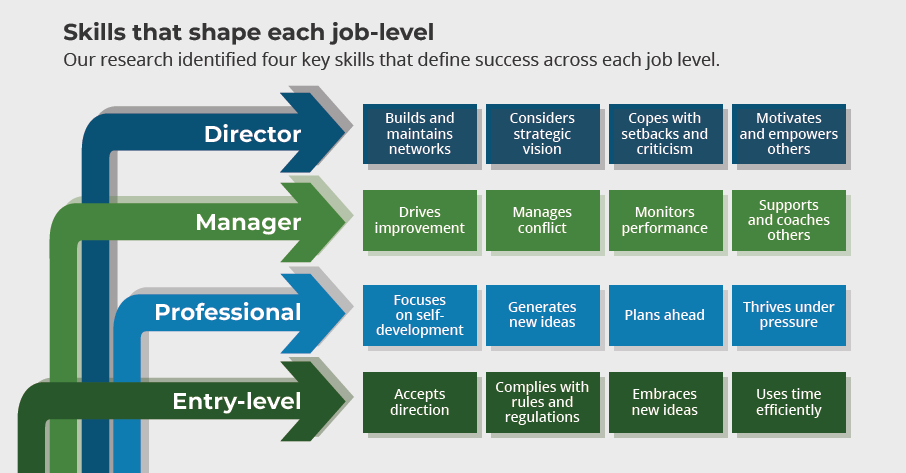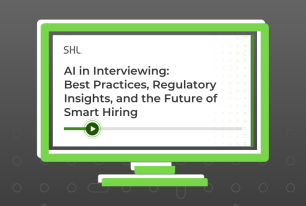From Entry-Level to Director: A Skills-First Succession Plan
Perpetual change to organizational values, priorities, and strategies is now the norm. As architects of organizational culture and strategy, HR teams must plan for succession by understanding and developing the key skills that drive success at each job level.
Share
Future-proofing HR leadership
HR leaders today, and those of tomorrow, must master adaptability, global talent mobility, agility, and AI integration to not only survive, but also thrive in, periods of continuous change. A strong HR leadership succession plan supported by intentional skills development ensures smooth leadership transitions with minimal disruption and empowers future HR leaders to drive sustained organizational success.
Achieving this requires aligning HR development with the organization’s unique goals, building solid training pathways, and cultivating skills that build a motivated, high-performing workforce.
Understanding HR skills across job levels
Because the skills necessary for success at each HR job level build on those of the previous one, a development pipeline enables high performers to progress naturally from entry-level to senior leadership roles, so HR vacancies can be filled by high-performing HR employees already familiar with the organization’s values, roles, and culture.
Entry-level positions, such as HR assistants, are typically filled by recent college graduates and focus on foundational HR skills that provide a strong basis for future development. Individuals in these roles should be able to take direction from others, embrace new ideas, and work efficiently. Success in these roles, when paired with demonstrated interest, may indicate readiness for a Professional or Individual Contributor position. Typically held by professionals with several years of experience, these roles emphasize finding new ways to increase productivity and improve processes, investing in self-development to upskill in new tools and technologies, and being comfortable with taking on greater responsibilities such as managing longer-term projects.
HR Managers, often promoted from HR specialist roles, must be proficient in conflict resolution, talent management, and using data to monitor performance and drive improvement across their team. Directors and Executives, who make up the highest levels of HR leadership, are responsible for setting vision, influencing the C-suite, and leading organizational change. They should be resilient to criticism, skilled at inspiring others to achieve shared goals, and able to build and nurture a network of strategic contacts that benefit the organization.
Based on research of thousands of HR job roles, SHL identified four key skills that define success at each job-level, demonstrated in the graphic below.

Succession planning in action
Emphasizing the intentional development of employees who demonstrate managerial potential can be an effective strategy to support “quiet hiring”, the practice of upskilling current employees to prepare them for higher-level roles. With targeted development insights, organizations can help individuals understand their strengths and focus on the skills they need to grow, lead effectively, and prepare for future opportunities within the organization.
Agility can also be built into succession planning practices by exploring role fit across multiple future scenarios, uncovering hidden talent, and nurturing long-term bench strength. When paired with ongoing mentorship and coaching, this approach ensures that organization-specific skills and knowledge are smoothly transferred from leaders to their successors.
Maximize your HR team’s potential with our guide to upskilling and reskilling your HR team and discover:
- The foundational and future skills that drive HR success
- Bite-sized tips to help your team develop each of these skills
- A six-step process to close skills gaps through effective upskilling and reskilling










